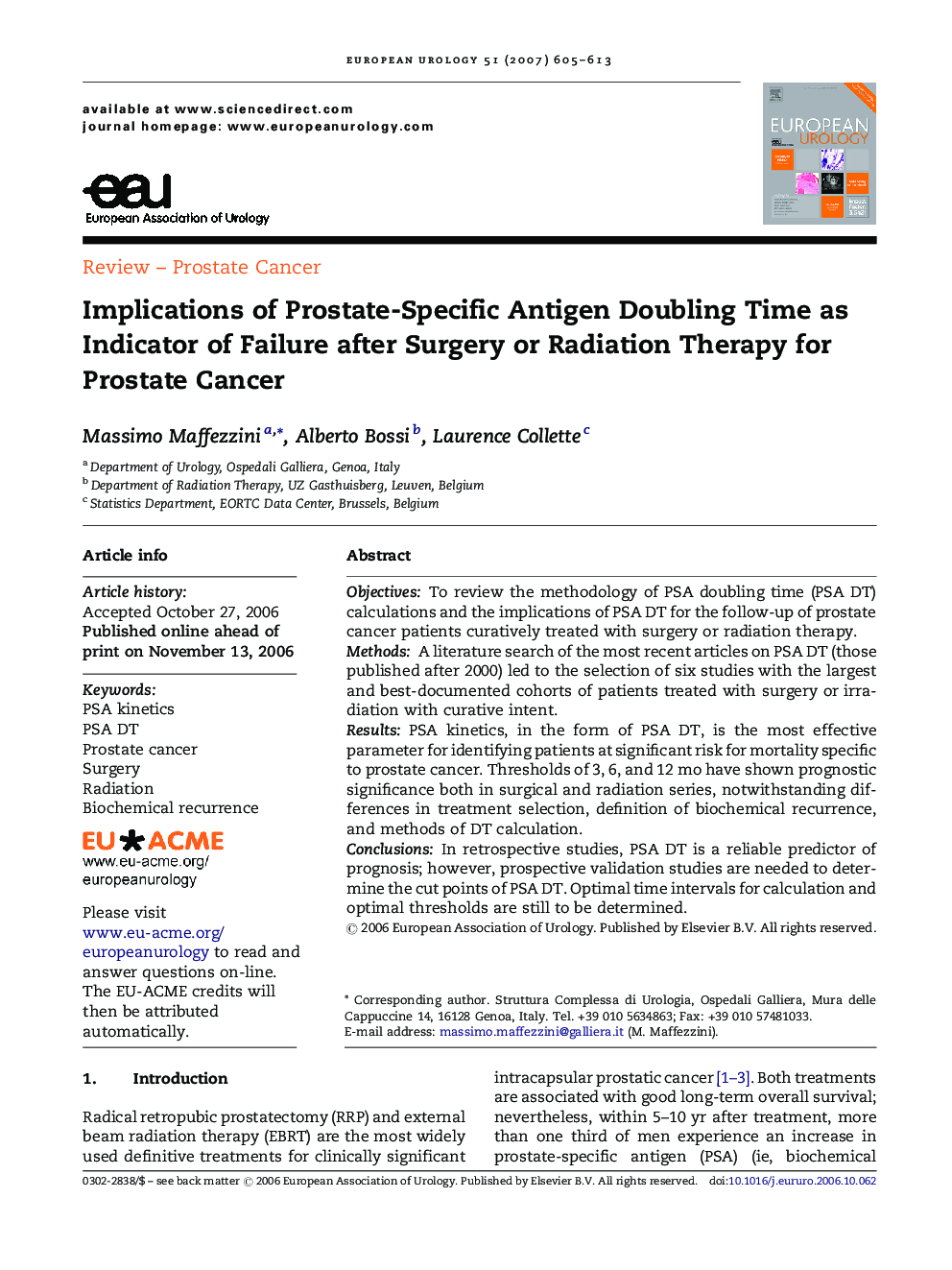| Article ID | Journal | Published Year | Pages | File Type |
|---|---|---|---|---|
| 3929782 | European Urology | 2007 | 9 Pages |
ObjectivesTo review the methodology of PSA doubling time (PSA DT) calculations and the implications of PSA DT for the follow-up of prostate cancer patients curatively treated with surgery or radiation therapy.MethodsA literature search of the most recent articles on PSA DT (those published after 2000) led to the selection of six studies with the largest and best-documented cohorts of patients treated with surgery or irradiation with curative intent.ResultsPSA kinetics, in the form of PSA DT, is the most effective parameter for identifying patients at significant risk for mortality specific to prostate cancer. Thresholds of 3, 6, and 12 mo have shown prognostic significance both in surgical and radiation series, notwithstanding differences in treatment selection, definition of biochemical recurrence, and methods of DT calculation.ConclusionsIn retrospective studies, PSA DT is a reliable predictor of prognosis; however, prospective validation studies are needed to determine the cut points of PSA DT. Optimal time intervals for calculation and optimal thresholds are still to be determined.
